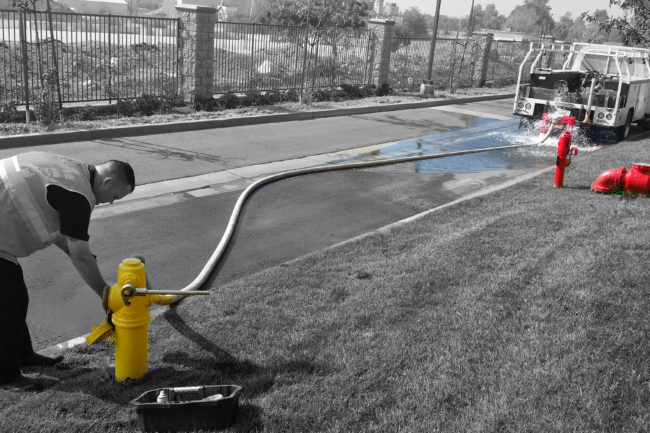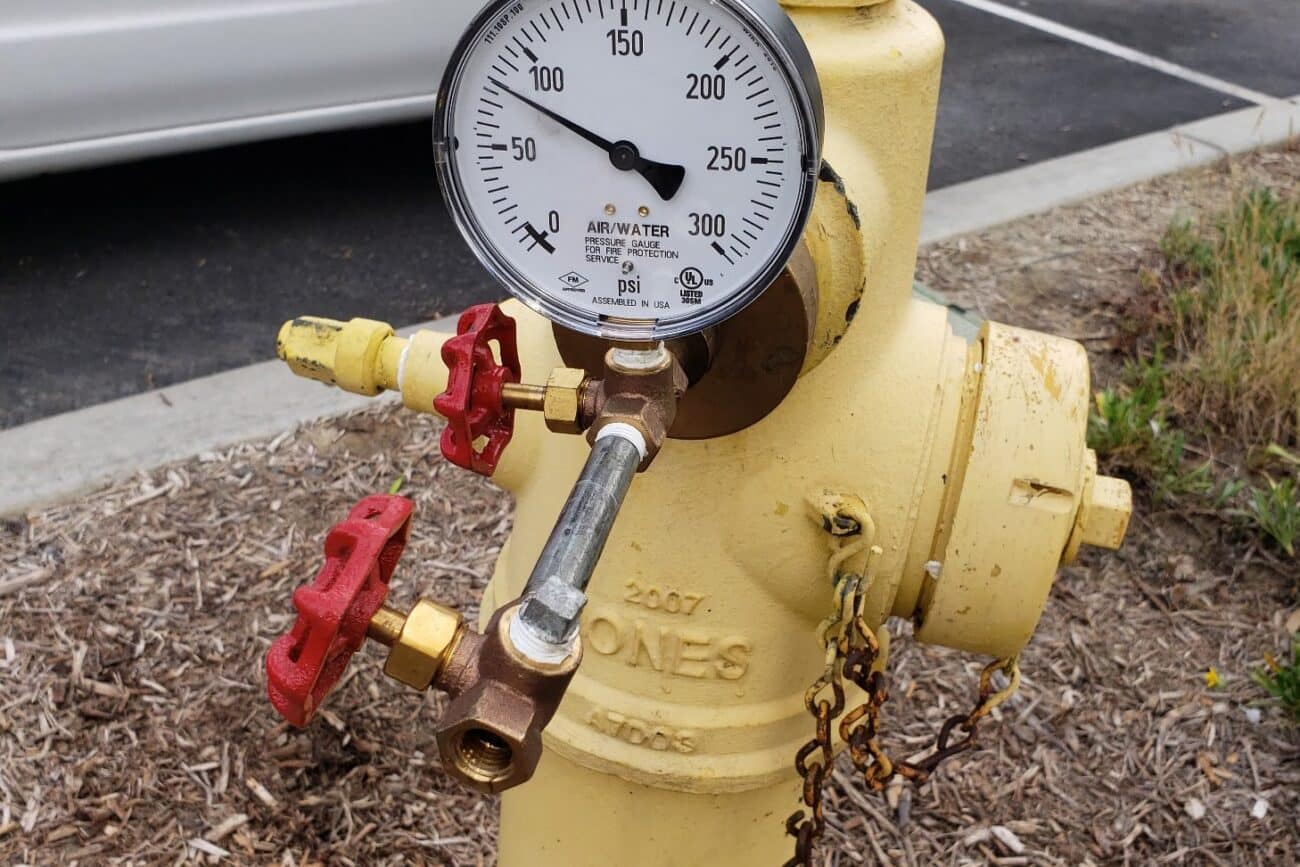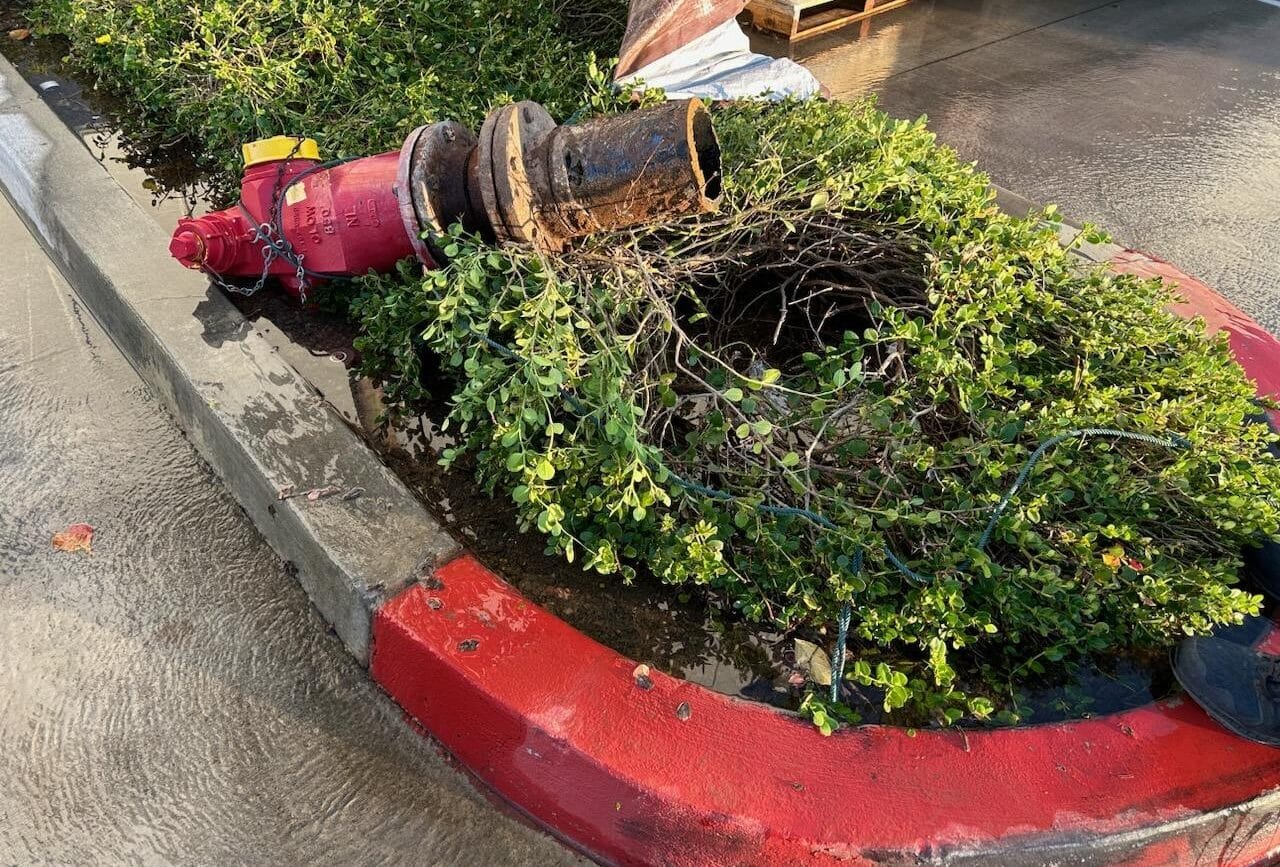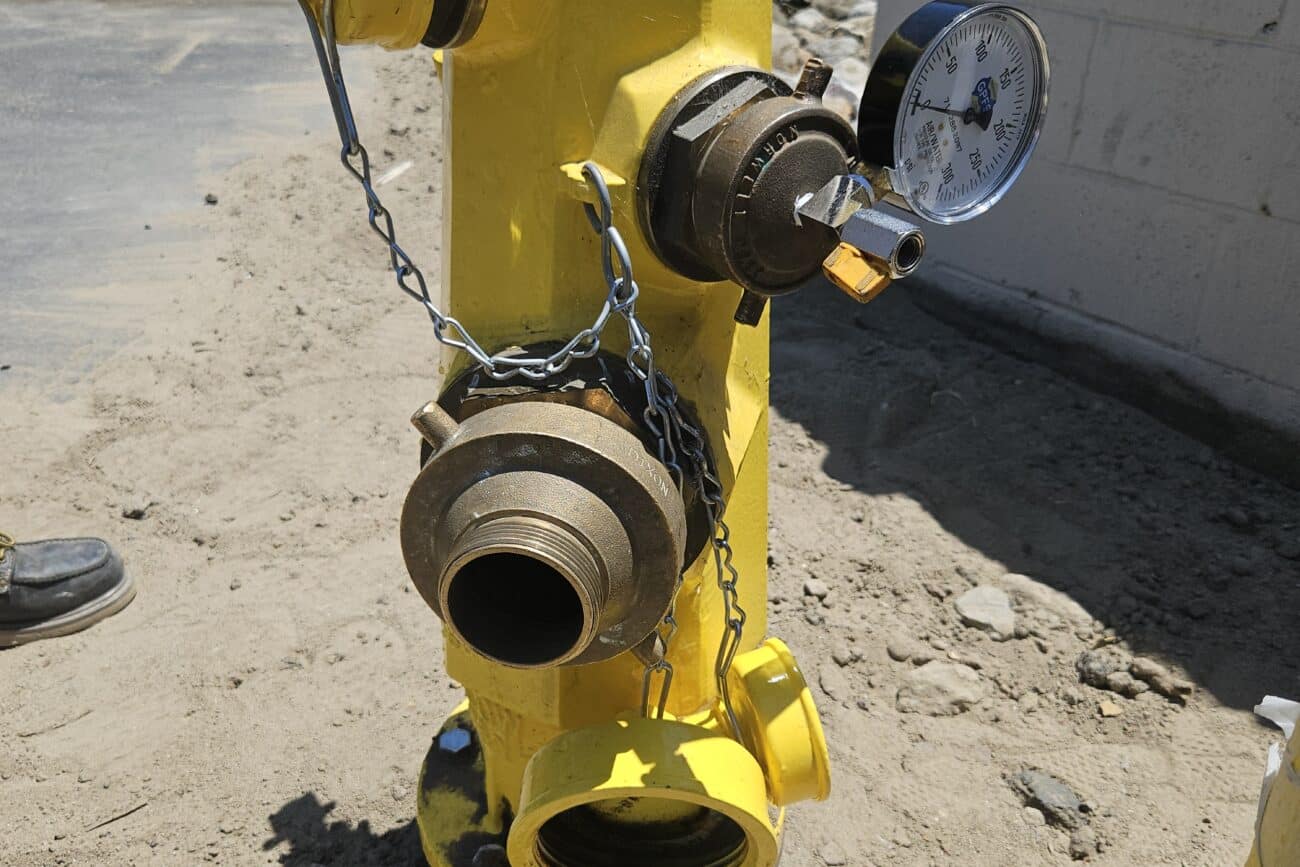Fire Hydrants Give First Responders A Fighting Chance.
It is vital to the protection of life and property to ensure that fully functional fire hydrants are available to all fire fighting personnel.
Bolt Mechanical can assist with the proper testing, fire flow data and flushing of your fire hydrants and associated yard main, keeping you compliant and ready should a fire event happen.

Services
Inspection, Testing and Maintenance are at the core of fire hydrants successful operation.
Bolt Mechanical can keep you on a regular Fire and Life Safety program by informing you of your next service and certification due date.
What are the requirements?
NFPA 25 CA Ed Chapter 7 Private Fire Service Mains
7.1 General.
7.1.1 Minimum Requirements.
7.1.1.1 This chapter shall provide the minimum requirements
for the routine inspection, testing, and maintenance of private
fire service mains and their appurtenances.
Table 7.1.1.2 shall be used to determine the minimum
required frequencies for inspection, testing, and maintenance.
- Monthly, Quarterly, Annual & Five-Year Certifications
If required by 7.3.1.2 – Table for Water Supply Test Evaluation (Item 2.8) - Inspections
- Testing
- Maintenance
*All services are performed per the State adopted NFPA 25 and the Local Authority Having Jurisdiction.
Repairs
Damage to Fire Hydrants have many causes, Bolt Mechanical can help!
What are the requirements?
NFPA 25 CA Ed Chapter 7 Private Fire Service Mains
7.2.2.5 Wet Barrel Hydrants
Wet barrel hydrants shall be inspected annually and after each operation, with the necessary corrective action taken as specified in Table 7.2.2.5.
Table 7.2.2.5
Wet Barrel Hydrants Condition Corrective Action
- Inaccessible – Make accessible
- Leaks in outlets or at top of hydrant – Repair or replace gaskets,
packing, or parts as necessary. - Cracks in hydrant barrel – Repair or replace
- Tightness of outlet caps – Lubricate if necessary; tighten
if necessary - Worn outlet threads – Repair or replace
- Worn hydrant operating nut – Repair or replace
- Availability of operating wrench – Make sure wrench is available
Our Services:
- Vehicle Collision Damage
- Complete Replacements
- Water Outlet Stem Replacements
- Break-Away Bolts
- Hose Connection Caps & Chains
- Custom Signage
- Dry Barrel Inlet Water Valves
- Low Water PSI Obstruction Investigation
*Work performed per the NFPA 13, 24 and the Local Authority Having Jurisdiction.
New Installations
We Can Help. Call Anytime!
- New Projects
- Expansions
- Upgrades
- Tenant Improvements
- Plan Design & Submittal
*Work performed per the NFPA 13, 24 and the Local Authority Having Jurisdiction.
If you would like to learn more about our other service please click here.
Document Control
Bolt Mechanical provides you with the required State Fire Marshal Certificates for your Fire and Life Safety systems.
If your Authority Having Jurisdiction (AHJ) contracts with The Compliance Engine, we send the required reports to them via our account.
Are you in a Los Angeles City Fire Chiefs Regulation 4 area? We submit those documents for you as well!
Access your files on our cloud server at anytime, from anywhere. We keep your records straight and up-to-date whenever you need them.
Call Anytime!
Learn more about document Control
Fire Hydrants Tech Tip
Information on Fire Hydrant Design from NFPA
Fire Hydrants – Design
NFPA 291 provides guidance on fire flow tests and marking of fire hydrants in order to determine and indicate the relative available fire service water supply from hydrants and to identify possible deficiencies which could be corrected to ensure adequate fire flows as needed.
Current Edition: 2022
NFPA 1: Minimum Number of Fire Hydrants for Fire Flow
By Kristin Bigda 16-Sep-2016
Section 18.5 of NFPA 1 provides requirements for fire hydrants, including location, distribution, minimum number, clearance, marking, and testing and maintenance.
Section 18.5 was revised in its entirety for the 2015 edition of the Code. Previous editions provided a performance-based requirement that the number and type of fire hydrants and connections to other approved water supplies be capable of delivering the required fire flow and be provided at approved locations.
The former Annex E was deleted for the 2015 edition of the Code. In its place, Section 18.5 was revised by the addition of prescriptive, mandatory requirements for fire hydrant location and distribution based on the required fire flow determined in accordance with Section 18.4.
To determine the minimum number of fire hydrants for fire flow, the following provisions should be followed:
The aggregate fire flow capacity of all fire hydrants within 1000 ft (305 m) of the building cannot be less than the required fire flow.
Table 18.5.4.3 provides the maximum fire flow capacity for which a fire hydrant can be credited.
Important Notice: Any opinion expressed in this column (blog, article) is the opinion of the author and does not necessarily represent the official position of NFPA or its Technical Committees. In addition, this piece is neither intended, nor should it be relied upon, to provide professional consultation or services.





